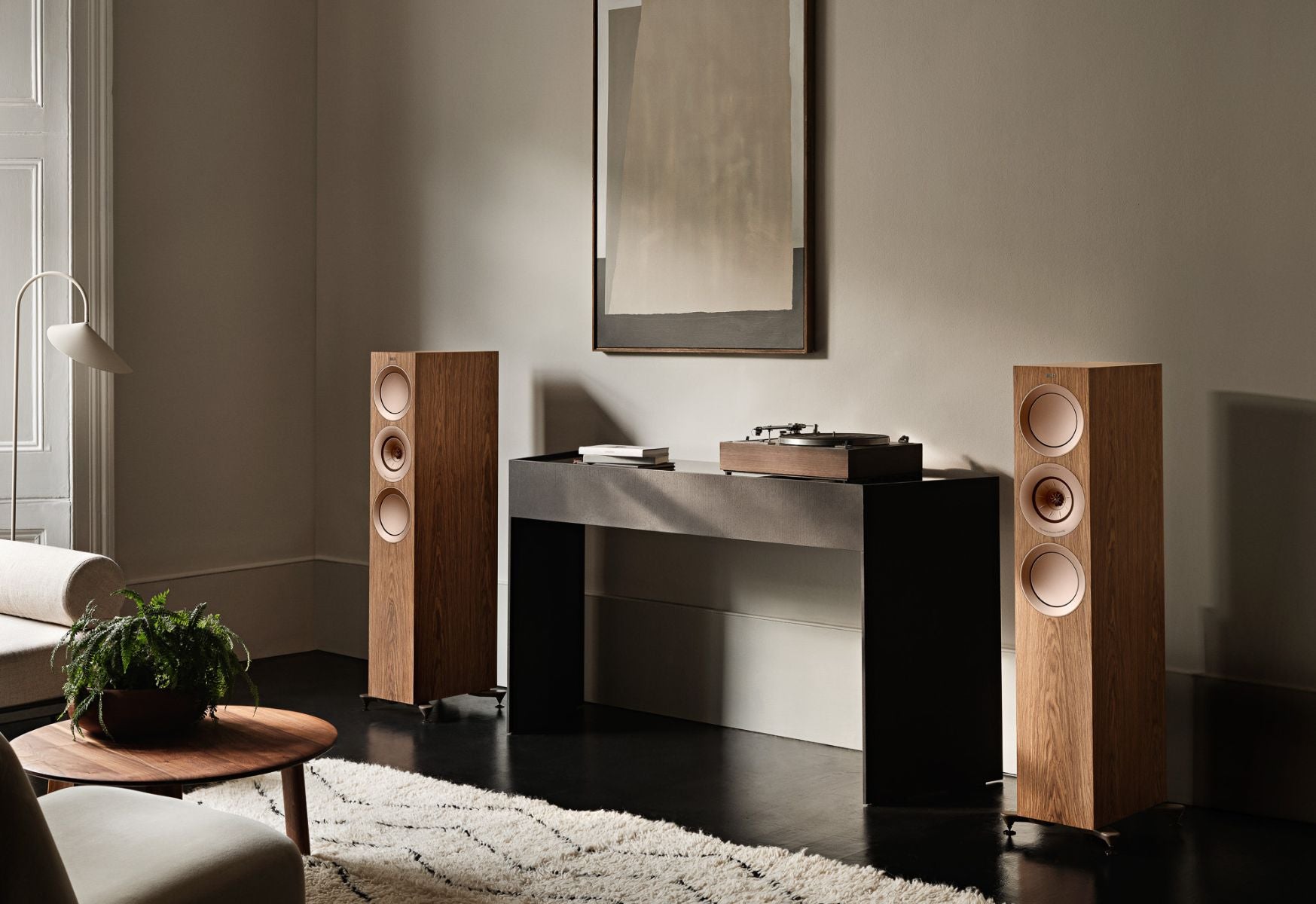One Week with the dCS LINA
First impressions
The dCS LINA has made it to our showroom! We were excited to get it out of the box on on demonstration as quickly as possible.
The three stack LINA consists of a LINA DAC, which also functions as a network streamer, the LINA Clock, and the LINA Headphone amplifier.
First off, the headphone test.

Getting the dCS LINA wired up and firing was a breeze. If you're not familiar with dCS's clocking concept, all dCS products (actually, all electronic products) have an internal clock. This is a timekeeper that ensures all data that is being whizzed around inside the unit stays in time to minimise errors in data handling and processing. However, as this clock is on the same power supply, on the same circuitry and in the same chassis as the rest of the electronics, it can be prone to errors. One of the reasons why conductors exist is to ensure the orchestra are playing at the same time and in sync.
By taking the clock off-board into a separate chassis, it takes the load of the clock, which frankly, is one of the most important parts of the digital signal processing chain, off the unit actually doing the digital signal processing. The result is that the audio performance jumps, most notably in clarity and detail.
As a headphone amp, we wired it up to a set of the Meze Elites, and compared it to some of the other headphone amplifier solutions we have in the store, and we're pleased to say that the dCS LINA brings a new level of performance. Better clarity and bigger soundstage were the two things we noticed straight away compared to the competitors.
How does it perform as a two-channel streamer system?
We wanted to pit the dCS LINA up against the previous entry level product from dCS, the Bartok Apex. We set up a system consisting of an Accuphase E-5000 integrated amplifier and a pair of Wilson Sabrina X, and performed a number of A/B comparisons.
First off the rank, dCS LINA DAC vs dCS LINA DAC + LINA Clock.
The dCS LINA DAC sounds amazing, great detail and clarity, everything you'd want for a front end streamer. We're conscious of the fact it is a $22,000 streamer, certainly not an entry level streamer in the scheme of things, but for this money, it definitely holds its weight. Adding the LINA Clock to the DAC is a HUGE improvement. So much more detail, clarity, richness - the simple addition of taking the clocking load off the DAC into an external box pays off immensely.
Next, dCS LINA DAC vs dCS Bartok Apex. As expected, the Bartok Apex outperformed the LINA DAC. Most notably in richness - the Bartok Apex sounds a hellavalot richer than the LINA DAC in this test. But for 70% more dollars, you'd expect that.
The next test surprised us a little bit. We combined the dCS LINA DAC + LINA Clock and compared it to the dCS Bartok Apex. At a combined LINA price of $34,750 vs the Bartok Apex at $29,995, in dollar terms, one might expect the LINA DAC/Clock combination to outperform the Bartok. In fact, the Bartok Apex edges out the LINA combination. It's close, but there is an audible difference between the two, with the Bartok taking the cake. We put this down to the fantastic dCS Apex DAC - it really is an incredible upgrade and if any existing owners of Bartok, Rossini or Vivaldi haven't yet upgraded, you need to do it.
The last test we did was comparing the dCS Bartok Apex vs dCS Bartok Apex + LINA Clock. We were interested to see if customers with a Bartok Apex could gain a justifiable jump in performance by adding the dCS LINA Clock. This one was a little harder to pick, if we're honest - there was improvement there, but we couldn't justify the price. If external clocking is desired, then we'd suggest spending a bit more money and purchasing the dCS Rossini Clock to go with the Bartok Apex, or putting the $12,750 towards better cabling. Of course, the advantage with the dCS LINA Clock is the small form factor.
All in all, the dCS LINA is a great two channel solution and a head-fi stack, so if you enjoy both, the dCS LINA is a no brainer.



